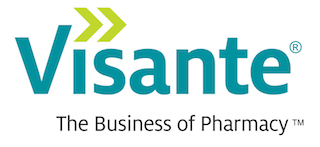SPONSORED CONTENT by Kristin Fox-Smith and William Wood, Visante
Those of us actively engaged in the 340B Program are well aware of the scores of issues faced by participating hospitals and it’s not surprising since they account for an exceptionally large percentage of all HRSA audits. But, what about other types of Covered Entities (CEs), such as the Specialty Clinics and Grantees? These important CEs are also subject to HRSA audits and face the same severe penalties for non-compliance, including the possibility of repayments to manufacturers.
Over the last decade, Visante‘s industry-leading 340B Program Assessment and Integrity Audit Readiness program has been successfully implemented in virtually all types of grantees. As a result of our experience in this specialized area, we are pleased to provide our “Need to Know” series of key takeaways for grantees.
HINT: You may want to start by reading our Visante Insider blog titled Manufacturers Create Chaos For the 340B Program which can be found here.
Ready? Here is our first “Need to Know” blog for new grantees.
Need to Know #1: You are new!
Okay, you know that. What else do you know and what do you need to know?
What do you know about the 340B Program? More specifically, what do you know about grantees such as yours?
What do you know about your role? Are you:
- An Authorizing Official (AO)? If so, do you know your role and responsibilities?
- A Primary Contact (PC)? Do you fully understand your role and responsibilities and how they differ from the AO?
- A healthcare provider? How do the 340B rules and regulations impact your role?
- A board member of your newly eligible organization? Did you even know that your organization is newly enrolled in the 340B Program?
- One of the many other 340B stakeholders?
- Compliance
- Accounting
- Billing
- Medical records
- Legal
As you can see, there is a lot that a 340B newcomer needs to know. Undoubtedly, you had to learn a lot to enable your covered entity to enroll. Is there more? You bet there is, keep reading!
Takeaway: Newcomers to the 340B Program have a lot to learn. Visante can help!
Need to Know #2: The Grant
Non-hospital types of organizations include a variety of health centers, Ryan White HIV/AIDS Program Grantees, and several types of specialized clinics. Some of them receive direct funding while others receive grants. These organizations will be referred to collectively as grantees as they all have similar 340B requirements.
ALL grantees may utilize 340B drugs only within the scope of their grant.
This leads us into Need to Know #2: The Grant
Have you read your grant? What is the scope of your grant? For some types of grantees this may be quite limited and easy to define. For others it may not be so straight forward.
A Comprehensive Hemophilia Treatment Center, for example, is expected to provide optimal care using a multi-disciplinary team approach that provides accessible, family-centered, continuous, comprehensive, coordinated and culturally effective care for individuals with hemophilia and other bleeding disorders. As such, the only 340B drugs that would be included in the scope of their grant would be antihemophilic factor VIII or factor IX or other drugs to treat bleeding disorders.
On the other hand, grantees such as Federally Qualified Health Centers (FQHC) provide primary care services in underserved areas. Primary care services encompass many different drugs which makes utilization within the scope of the grant large. Referrals to outside specialists could even qualify, assuming that the FQHC maintains the appropriate auditable records.
What is the term of your grant? The HRSA Notice of Award will specify a “project period” and will include several terms and conditions, including reporting requirements. What is the grant number? This can be found on Line 4B of the HRSA notice of award. Does it match the grant number shown for your organization in the Office of Pharmacy Affairs Information System (OPAIS)?
What is OPAIS? Keep reading, we will discuss that a bit later.
If your entity is selected for a HRSA 340B integrity audit the grant will be among the documents requested. Do you know where it is and how to obtain it?
Takeaway: Grantees may utilize 340B drugs only within the scope of their grant. Do you fully know the scope of your grant?
Need to Know #3: Navigating OPAIS
What is this OPAIS we mentioned above? OPAIS stands for Office of Pharmacy Affairs Information System.
The 340B registration and pricing databases are collectively known as the 340B Office of Pharmacy Affairs Information System (340B OPAIS). Authorized users of 340B OPAIS must have a user account with appropriate roles and permissions granted by HRSA. The functions a user can perform are determined by the user’s role. Until the user logs in, the user may only access the Public User Guides, Public Search, Reports/Files, and Login functions.
Authorized users may use OPAIS to initiate Covered Entity/Manufacturer registrations, change requests, or to respond to annual recertification requests.
Public users only have access to a limited selection of the system’s capabilities which include a variety of search criteria to search for Covered Entities (CEs), Contract Pharmacies (CPs), and Manufacturers (MFRs). Public users can also review and download a variety of available reports and files.
Now that you know what the OPAIS is, why do you need to understand it?
Among the findings that HRSA may issue following an audit is one for failure to maintain the accuracy of the covered entity’s information as it appears on the OPAIS. This can occur for things as seemingly minimal as incorrect entries for address, site ID, and name for offsite outpatient facilities. HRSA has been known to issue this finding even when the address for a contract pharmacy shown on the OPAIS differed from that on the contract by a little as a suite number!
A review of all of your OPAIS information should be part of your internal audit process and should include verification of:
- the name of your entity including address and shipping addresses, type of entity, and 340B ID number
- your grant number
- your Authorized Official (AO) and Primary Contact (PC), including their contact information
- your Medicaid billing status including whether you are carved in or carved out and all NPI and Medicaid billing numbers if you are carved in.
- If you are carved in you MUST also check the Medicaid Exclusion File (MEF) to verify the NPI and Medicaid billing numbers for all participating sites
- ALL contract pharmacies including proper addresses
Takeaway: Review of the OPAIS is a task that is fairly simple to accomplish. Don’t risk a HRSA audit finding for something this easy!
Stay tuned for additional articles that will include such topics as the role of contract pharmacies, understanding the HRSA audit process, and more.





